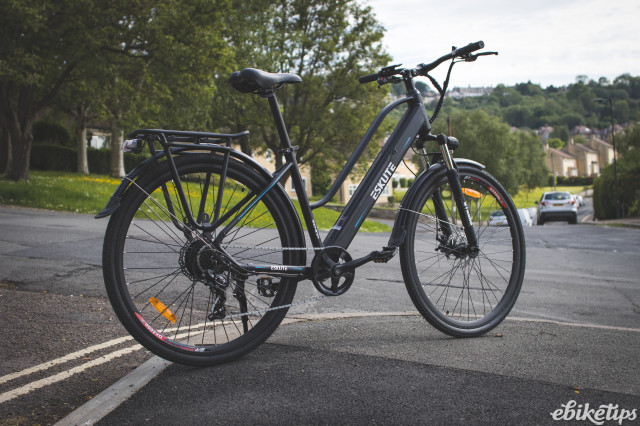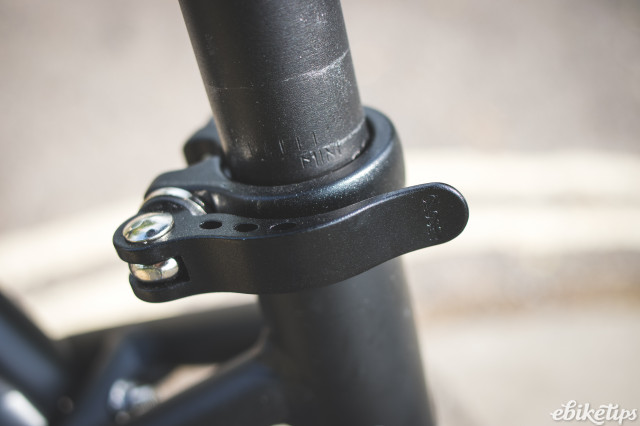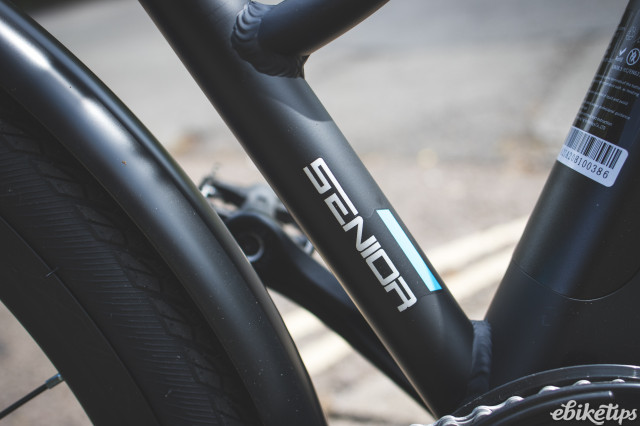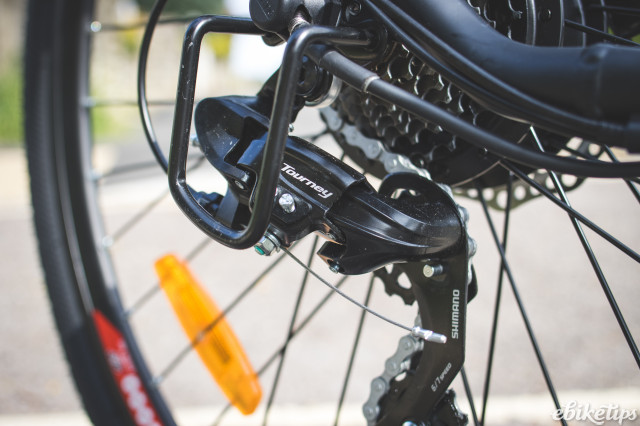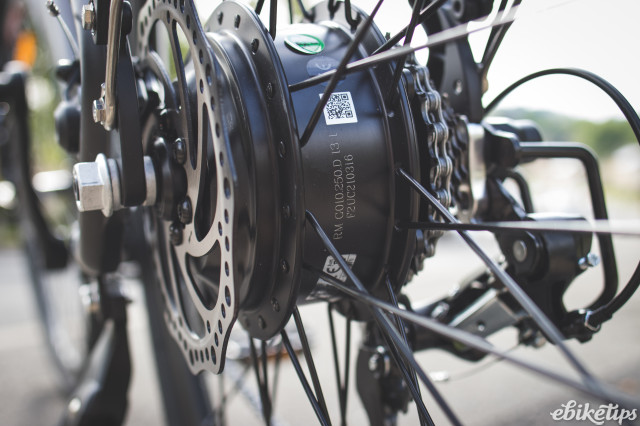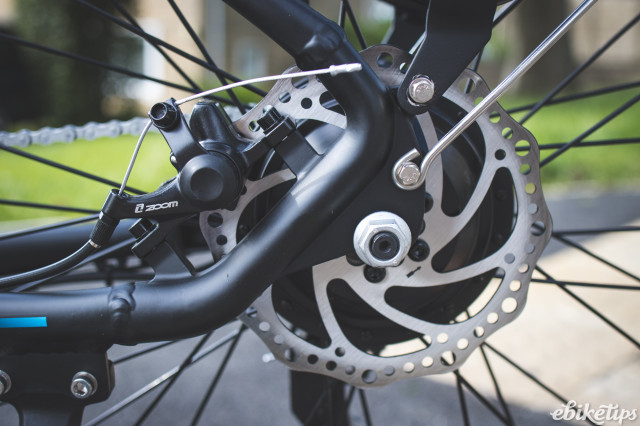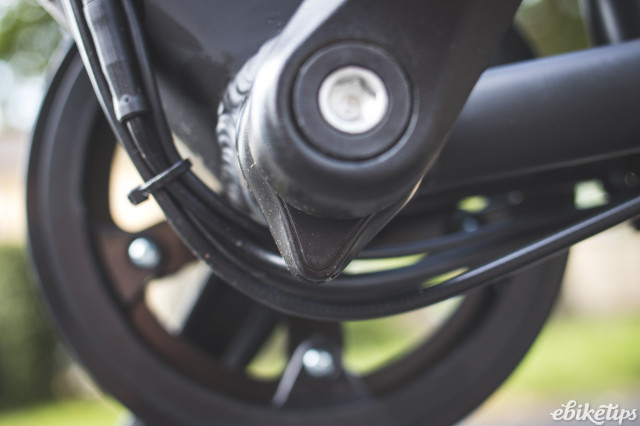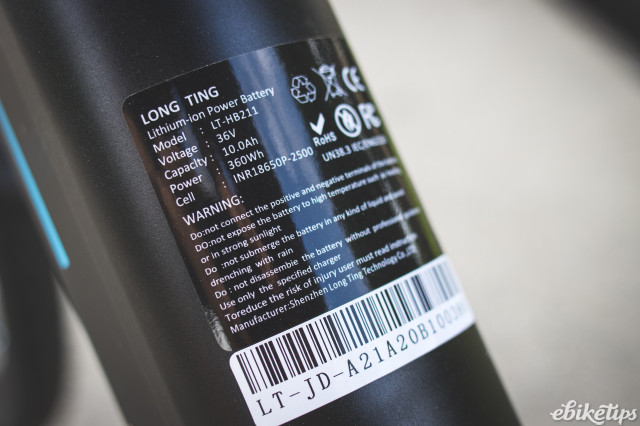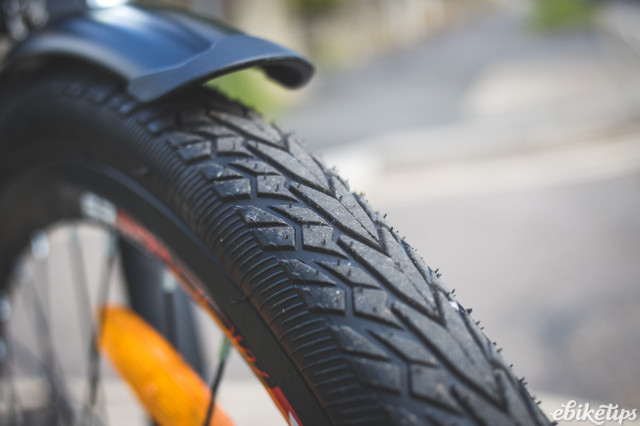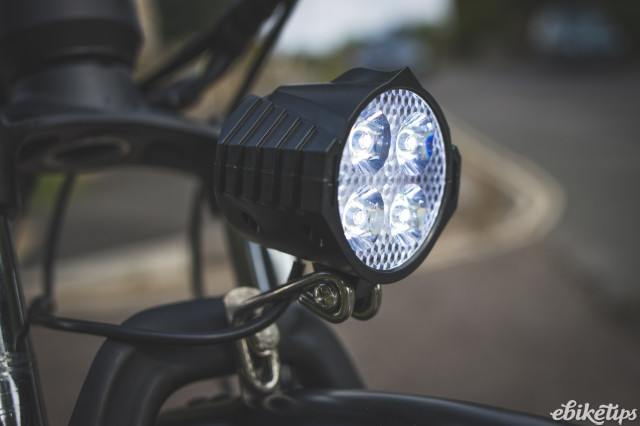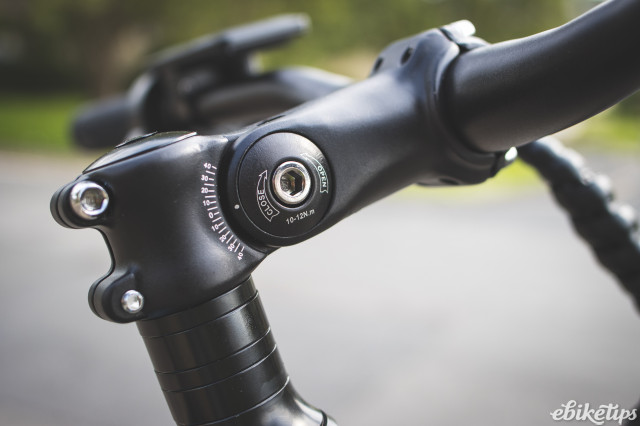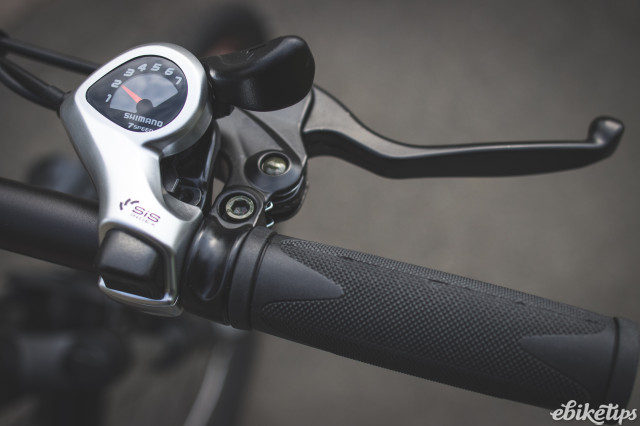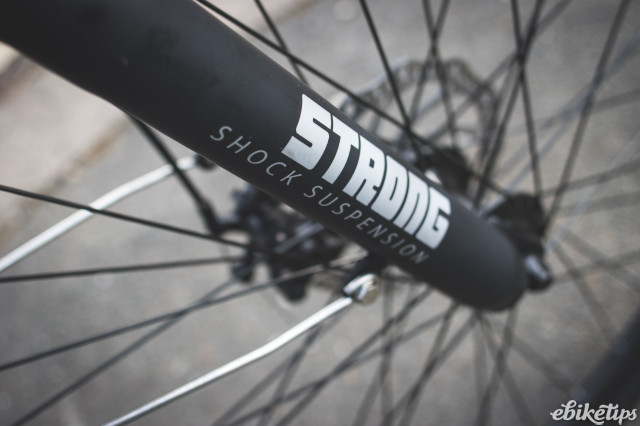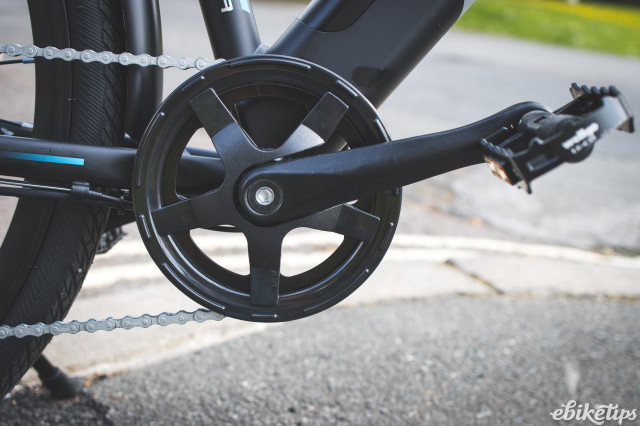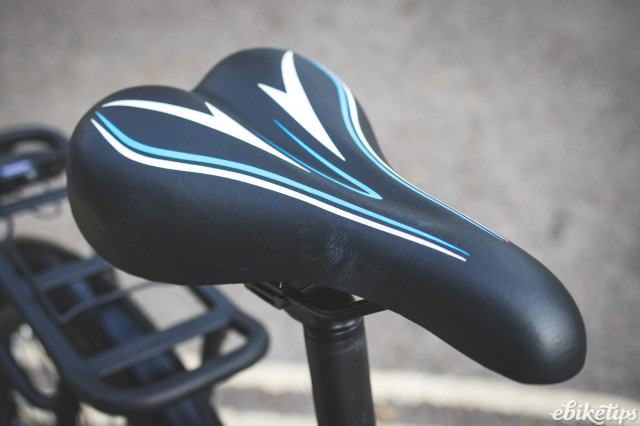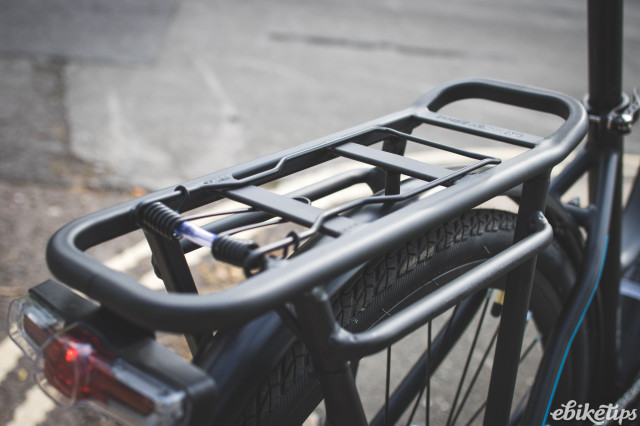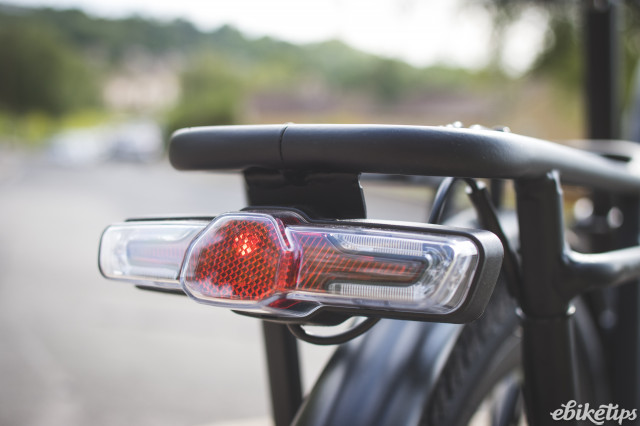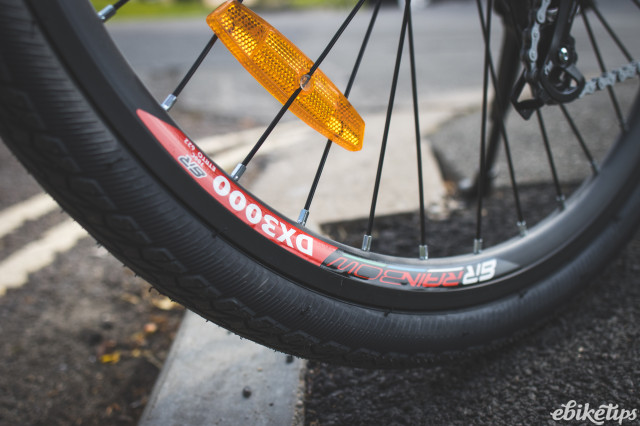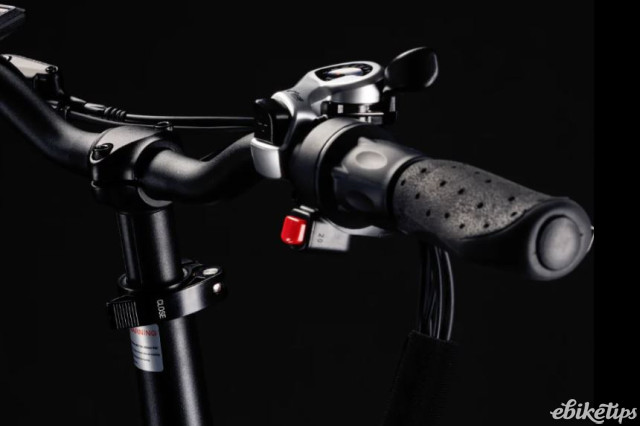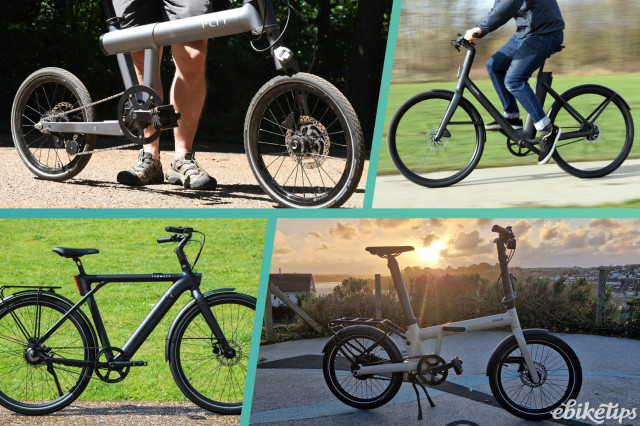Review: Eskute Wayfarer
Overview
- Good value
- Better than average finishing kit
- Full city spec
- Long frame will limit its appeal
- Fork is poor
- Battery management system could be improved
Eskute’s Wayfarer puts in a pretty good performance given its price tag of well under a thousand pounds. There are always compromises for this kind of money but the Wayfarer has less than most, and overall it’s a pretty likeable bike and better than the bikes it’s competing against on price. If it fits you, it’s a good choice.
If it fits you? Well, the Wayfarer is available in one size, and it’s a really, really, big size. At 47cm it’s not especially tall at the seat tube, and in fact the seatpost wasn’t really long enough for me. But at 189cm tall, it’s unusual for me to get on a bike and find it too long. With a 65cm effective top tube and a 50cm reach, it’s as long as, for example, a Merida mountain bike in XXL, the biggest size they do, for giant people. I mean, it’s REALLY long.
Because it’s got a low stepover and a short seat tube you’ll be able to get on it fine if you’re smaller; Eskute says the rider height range is 160 to 200cm, but if you’re shorter than about 175cm you’re going to find it super stretched out, even with the adjustable stem set as high as possible. It’s not a deal breaker, but it’s unlikely to be a perfect fit for, well, anyone. If you’re tall enough for the reach to be right then you’ll need a longer seatpost, and if the seatpost fits you the bike’ll be too long. It’s a weird size to pick for a one size frame, basically. In an ideal world it’d be at least 10cm shorter in the reach.
Eskute Wayfarer: the build
For all that, it’s a decent-looking alloy frame, especially for the money, and the 360Wh internally mounted battery sits snugly, and doesn’t rattle. The rack is good quality, and the mudguards and kickstand are okay. Contact points are a mixed bag: the saddle is decent enough, the bar grips on the wide alloy bar are thin and not particularly comfortable.
The transmission is a Shimano Tourney rear mech with an easy-to-use bar shifter. There’s a rustless KMC chain, and a range of gears that are entirely sensible: cheap bikes often have huge chainrings, making them overgeared. The Wayfarer doesn’t fall into that trap.
Helping you along is a hub motor system, using a 250W brushless rear hub motor with a cadence sensor controlling it. There are five levels of assistance, selectable from a bar-mounted LCD display that gives you the usual stuff you’d expect: battery status, speed, mode, distance. On top of that – well, below that actually – is a button for the horn, which is obnoxiously loud and easy to hit by mistake, and a switch for the lights. At the front there’s a 4-LED head that’s nice and bright, and at the back you get a rear LED with a reflector, attached to the rack. Both are perfectly serviceable and good spec given the bike’s price. You even get good quality Wellgo pedals.
What’s not good quality, of course, is the fork, because they seldom are below about £2,000 and the Partner-branded one on the Wayfarer is no exception. It’s badly damped, so it pings you up in the air over speed humps, especially because the bike is so long that even I struggled to put any weight on the front wheel. It’s also flexy enough to make the bike dive under braking and feel a bit vague in the steering. Once again, a rigid fork and better tyres and handlebar grips would be a much more effective way of adding some comfort without sacrificing the ride experience and adding unnecessary weight. Although to be fair to the aforementioned tyres, they’re mostly fine, if a bit stiff.
Eskute Wayfarer: motor power
Let’s move on to the motor power, which is… okay. I wasn’t expecting miracles, and none were forthcoming, but the motor in the Wayfarer is at or maybe marginally above the level you’d expect at this price. Ignoring levels 1 and 2, which no-one will ever use, the bike feels very able on the flat and thankfully motor assistance is available up to nearly the assistance limit of 25km/h in level 3 and right up to it in 4 and 5, so you can ride at a reasonable speed without being in top mode. The cadence sensor isn’t the most eager to get you going, and it’s worth remembering to change down to a low gear when you stop so that you can spin the pedals quicker and kick in the power. In top gear from a standstill it can take a few seconds to notice. Luckily the thumb shifter is great for dumping a load of gears at short notice if the lights change. Another quirk of the motor system is that if you go over the assistance limit and then drop below it it can take some time for the motor to cut back in again, so you tend to yo-yo on the flat a little bit in the higher assistance modes as you speed up over the limit and then slow down to well below it.
On the hills the bike is really good up to about a 5% gradient and okay up to about 10%, after which it begins to struggle a little. The 12% corner of my benchmark hill was taken in bottom gear with a reasonable input from the rider, but it’s not the worst I’ve tried. If your daily use isn’t going to take in anything steeper than a gentle rise then the motor is more than up to the job. It’s less well suited to sterner tests, but even then it’s not bad, especially at well below £1,000. And it’s a pretty likeable bike to ride, for all that it’s about the length of an oil tanker. It’s well put together and, save from a few pings from the Tektro mechanical discs, reasonably quiet. The motor isn’t especially noisy, the gears work well, the tyres do their thing, the brakes are a little spongy, but plenty powerful enough to bring the 25kg of bike to a stop. It’s not a bike you’d want to carry up any stairs but it’s no worse than average there, and a fair bit better than most bikes at a comparable price. Everything is made of alloy, there are no cheap steel components hiding anywhere.
Range from the 360Wh battery isn’t huge; Eskute says it’s up to 80km and that’s optimistic, as ever. Even on the flat on low power you’d probably struggle to get that, and I could drain the battery to the point where I was definitely wanting to charge it again with about 20km of hilly commuting. The usual grumbles about cheap motor systems apply here: the battery level indicator is quite heavily affected by the motor load, so the bars go down as you’re chugging up the hill, then (some of them) magically reappear when you ease off at the top. It makes it hard to know what the real state of the battery is, meaning you’re more likely to err on the side of caution. Also, the bike is just better when it’s fully charged: the power falls off noticeably as the battery depletes. So really, it’s one to charge as often as you can. It’s unlikely that your daily errands are going to run it flat, though, and the battery is simple to remove for indoor charging.
Eskute Wayfarer: value for money
So, at £899 (£849 with our offer code - see below) does the Eskute Wayfarer represent a good buy? Well, it certainly ain’t bad. A lot of the pitfalls of cheaper bikes – poor gearing selections, cheap and heavy steel components, missing city equipment – are avoided here. Okay the motor power isn’t stellar, and you’re getting a dreadful suspension fork that makes the ride experience worse and not better, but the Wayfarer is far from alone in either of those and it compares pretty favourably to the competition. Against the recently tested E-Trends City for example, which retails for the same price, it’s a clear winner. There are compromises here, but at well under a thousand pounds you’re always going to get them, and as a complete package the Wayfarer is a pretty likeable bike, really, and well specced for the money. If you’re looking for something cheap for daily duties and you’re not expecting miracles, then you’ll almost certainly be happy with this bike. Especially if you’re tall...
Get £50 off with ebiketips!
head over to https://www.eskute.co.uk/ and use the code ebiketips50 to get £50 off an Eskute Wayfarer.
